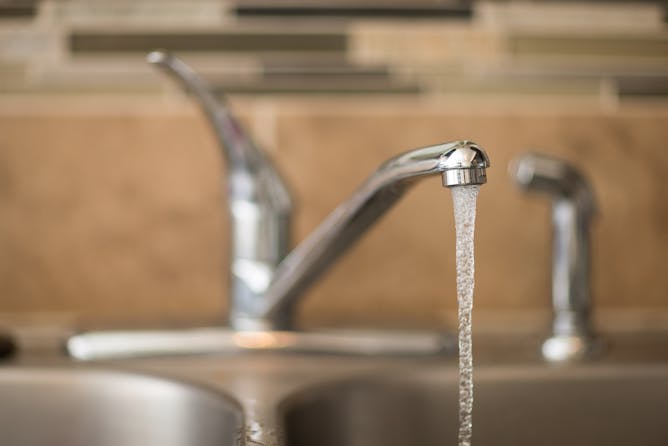|
|
|
|
Humans can’t live without water. But research indicates that some 2 million Americans lack access to running water, indoor plumbing or wastewater services, and many more struggle to pay their monthly bills. A 2019 survey found that U.S. households in the bottom fifth of the economy spent 12.4% of their disposable income on water and sewer services. Aging infrastructure, environmental cleanups and other challenges have sharply driven up the cost of water and sewer services nationwide over the past decade.
The Build Back Better Act, now pending in Congress, would provide $225 million to create the first federal water aid program in the U.S.. Washington State University economist Joseph Cook, who has studied water aid programs around the world, explains how Chile, a middle-income nation, has designed a strategy that protects the poor without promoting water waste.
Also today:
And before you go – a brief reminder that, like water, quality information is an essential good. Your support helps us increase the supply.
|

|
Jennifer Weeks
Senior Environment + Energy Editor
|
|

Water: an increasingly expensive necessity.
iStock via Getty Images
Joseph Cook, Washington State University
Should the U.S. help low-income households afford water service, as it does with heating and groceries? Chile does. An economist explains how it works there and how it could work here.
|
Education
|
-
David L. Di Maria, University of Maryland, Baltimore County
The US has experienced a record decline in the number of international students. How long will the trend continue? An international education scholar weighs in.
-
Kate Kilpatrick, The Conversation
Rates of obesity and eating disorders like anorexia and bulimia both surged among young people over the past two years. Scholars explain why, and how parents can support kids dealing with body shame.
|
|
Health + Medicine
|
-
Ed Feil, University of Bath
Not much data, but lessons have been learned from the slow response to delta.
-
Jeremy Kagan, University of Southern California; Lourdes Baezconde-Garbanati, University of Southern California; Sheila Murphy, USC Annenberg School for Communication and Journalism
Two film crews comprised of Latino and Black cinematic arts graduate students made short films to counter vaccine fears in both communities.
|
|
Ethics + Religion
|
-
Charles J. Russo, University of Dayton
Carson v. Makin, a case from Maine about aid to students attending religious schools, goes to the Supreme Court on Dec. 8, 2021.
|
|
Science + Technology
|
-
Timothy Hsu, IUPUI
There is a lot to consider when buying a new pair of headphones. A professional musician and acoustics researcher explains how the science of sound and quirks of human hearing make for a great listening experience.
-
Noah Wardrip-Fruin, University of California, Santa Cruz
Video games are everywhere. So who was the first person to come up with the idea of playing a game on a computer screen?
-
Eric Smalley, The Conversation
Data breaches have become a fact of life. Here are articles from The Conversation that detail the threat, why it happens and what you can do to protect yourself.
-
Sathy Balu-Iyer, University at Buffalo
A recent lab-stage study finds that preexposure to the proteins used to treat conditions like hemophilia A could help train the immune system to tolerate rather than attack therapies.
|
|
Trending on Site
|
-
Robert Jacobs, University of Rochester
Errors don’t necessarily mean your mind is faulty. They may actually be a sign of a cognitive system with limited capacity working efficiently.
-
Charlotte Roberts, Durham University; Gabriel D. Wrobel, Michigan State University; Michael Westaway, The University of Queensland
People have lived with infectious disease throughout the millennia, with culture and biology influencing each other. Archaeologists decode the stories told by bones and what accompanies them.
-
Nathaniel Hafer, UMass Chan Medical School
The two types of COVID-19 tests – antigen and PCR – work in very different ways, which is why one is fast but less accurate and the other is slow and precise.
-
Reader Comments 💬
"This is exactly what Lisa Genova talks about in her book Remember. Our brains aren’t designed to remember every name we hear, plan we make, or day we experience. Just because your memory sometimes fails doesn’t mean it’s broken or succumbing to disease. Forgetting is actually part of being human..."
– Reader Nicola Thayilon the story Misremembering might actually be a sign your memory is working optimally
|
|
| |
| |
| |
| |
|
|
|
|
|
|
|